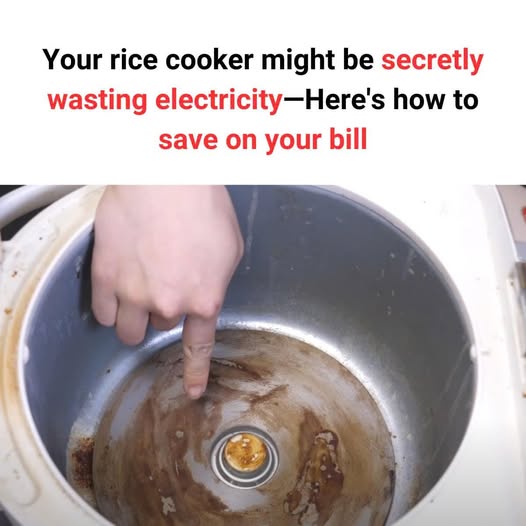ADVERTISEMENT
Your Rice Cooker Might Be Secretly Wasting Electricity: Here’s What You Need to Know
Rice cookers are a staple in many kitchens worldwide, known for their convenience and ability to cook rice to perfection with minimal effort. While they simplify meal preparation, there’s one aspect of the rice cooker that many users may not realize: its potential to secretly waste electricity. If you’re like most people, you probably think you’re getting a great deal of energy efficiency from your rice cooker, but in reality, it might be using more power than you realize.
In this article, we’ll explore how rice cookers work, how they can waste electricity, and most importantly, how you can make sure you’re using yours in the most energy-efficient way possible. Let’s dive in and take a closer look at this common kitchen appliance and how you can optimize its usage.
How Does a Rice Cooker Work?
A rice cooker is a simple yet clever appliance designed to make cooking rice easier. At its core, it uses a combination of heat and steam to cook rice perfectly every time. Most modern rice cookers include an electric heating element at the base, which heats up the inner pot where the rice and water are placed. Once the water reaches a boiling point, steam is created, cooking the rice.
At the end of the cooking cycle, the rice cooker typically switches to a “keep warm” setting to maintain the rice at an ideal serving temperature. This is when many people unknowingly leave their rice cookers running for an extended period, leading to unnecessary energy consumption.
How Rice Cookers Waste Electricity
While rice cookers are convenient and energy-efficient in many ways, they do have the potential to waste electricity under certain circumstances. Here’s how:
1. The Keep Warm Setting
One of the most significant ways rice cookers waste electricity is through the keep warm function. This feature is designed to keep your rice at a warm temperature for hours after cooking, but if left on for too long, it continues to draw power. Some rice cookers can keep rice warm for hours, consuming energy without any real benefit once the meal is ready to serve.
Many users leave their rice cookers on the keep-warm setting for hours, thinking the rice will stay fresh. However, this constant warming process adds up to unnecessary electricity consumption, especially if you’re cooking small amounts of rice that can be consumed relatively quickly.
2. Overheating the Rice Cooker
Leaving your rice cooker on for too long, even when it’s not actively cooking, can lead to overheating. When the rice cooker’s temperature sensor detects that the rice is cooked, it switches to the keep-warm mode. However, in some cases, the temperature sensor can be too sensitive or malfunction, causing the cooker to keep heating even after the rice is fully cooked.
This issue can result in the rice cooker using more electricity than necessary, leading to wasted power and potentially even damaging the appliance over time.
3. Cooking Large Amounts for Small Batches
If you’re cooking a small amount of rice but using a large rice cooker, you may be using more electricity than needed. Rice cookers are often designed for larger quantities of rice (e.g., 6 to 10 cups). When cooking a smaller batch, the cooker still uses the same amount of energy, meaning that the efficiency is lower than if you were cooking a full batch.
Cooking in a smaller rice cooker for small batches may be a more energy-efficient choice, but this can be inconvenient for those who need to cook larger quantities.
For Complete Cooking STEPS Please Head On Over To Next Page Or Open button (>) and don’t forget to SHARE with your Facebook friends
ADVERTISEMENT
